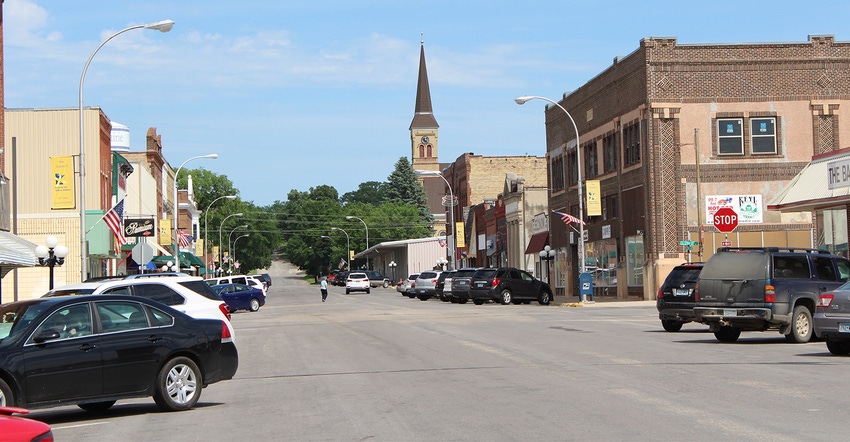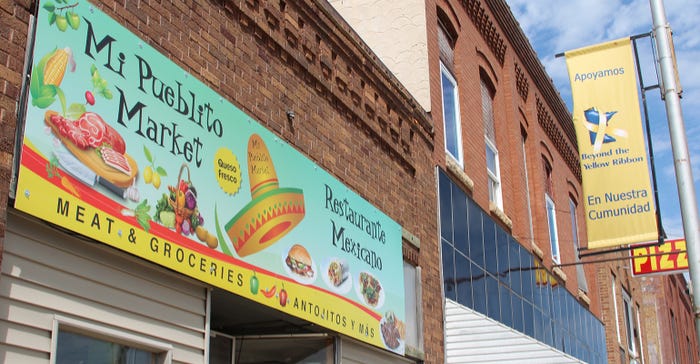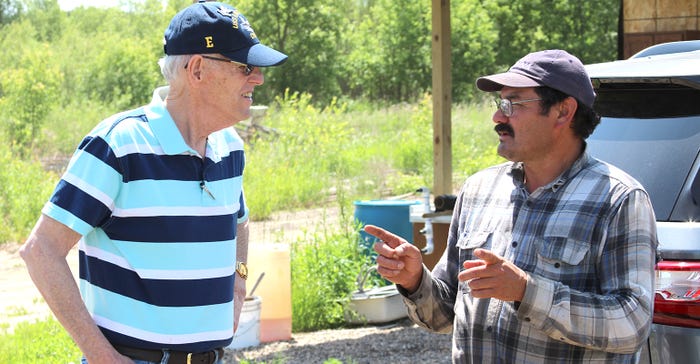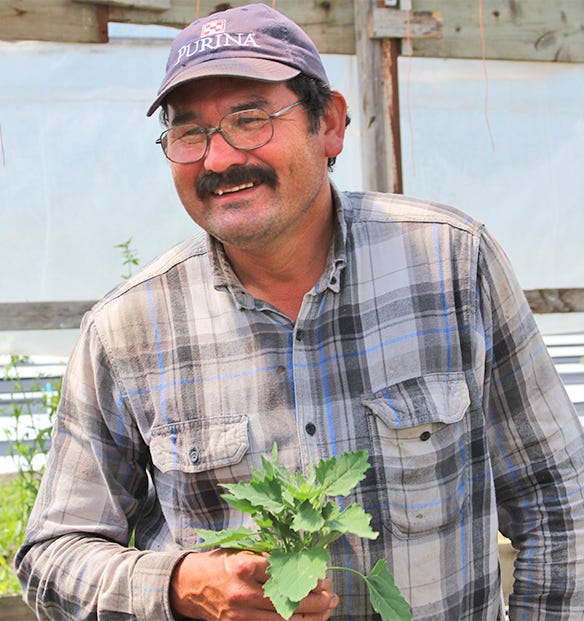August 9, 2018

By Andy Steiner
Long Prairie Mayor Don Rasmussen enjoys taking visitors on a tour of Central Avenue, the once-bustling main street of his town, located about an hour northwest of St. Cloud, Minn. While plenty of empty storefronts line the street, take a closer look and you’ll see several new businesses now open where old ones once stood, like spring plants blooming in a freshly tilled garden.
Not so long ago, Long Prairie, like many small towns in this part of Minnesota, was in decline, with an aging population, shrinking schools and a struggling downtown business district. Then, about two decades ago, things began to change: An influx of Spanish-speaking workers, mostly from Mexico, migrated to Long Prairie for jobs at agricultural businesses like Long Prairie Packing, Dan’s Prize, Daybreak Foods and Minnesota Fresh. Some also began working on large dairy farms in the area.
With the new workers came new business development: Over the past 10 years, a bakery, three restaurants and a grocery store opened in formerly abandoned shops on Central Avenue. Another grocery store opened on the highway outside of town.
Seeing new businesses thrive where old ones once stood makes Rasmussen feel proud. After all, most of the new entrepreneurs are immigrants and, as Rasmussen says, “I hope they’re staying here and opening these businesses because they’ve been treated well.”
For Rasmussen, who’s been mayor for the past 18 years, treating new community members well includes supporting and promoting his town’s immigrant- and minority-run businesses.

AN ORIGINAL: Mi Pueblito Market and Restaurant is one of the minority-owned businesses in Long Prairie, Minn., that�’s owned by José Garcia, one of the town’s first Mexican immigrants.

“We want them to succeed,” he says, standing in front of Mi Pueblito Market and Restaurant, an expansive business owned by José Garcia, one of Long Prairie’s first Mexican immigrants. “When they do well, everyone in town gets a benefit.”
Economic boost
Immigration-fueled benefits reach beyond Central Avenue. They include a bustling and revitalized elementary and high school, where more than 50% of students now enter speaking Spanish as their first language; and a new hospital, CentraCare Health, built earlier this year. A new wellness center will open next summer.
Mi Pueblito, which stretches over three storefronts and has plans to expand to a fourth, includes a grocery store, a popular restaurant, and a selection of shoes and clothing. José Garcia said he employs four full-time workers and generates monthly sales of more than $50,000. Other nearby immigrant-owned businesses draw customers, many Spanish-speaking transplants looking for products that can’t be found at the local Family Dollar or Coborn’s Superstore. Local minority-owned restaurants like Taqueria Chavez and Ming Dynasty draw customers of all ethnic backgrounds.
Though he’s still waiting for official U.S. Census figures, Rasmussen believes that the immigrant influx means that his town’s population has grown significantly. “Officially, our sign says we are at something like 3,500,” he laughs, “but I think we are closer to 4,000 now, maybe even more.”

Long Prairie is the county seat of Todd County in Minnesota. Its population is 3,497, with about 32% of its residents listed as Hispanic. Here, Mayor Dan Rasmussen (left) talks with Javier Garcia, manager of Agua Gorda Farmers Cooperative.

Urban, rural impact
Immigrant entrepreneurs in Long Prairie aren’t limited to downtown storefronts. In 2013, the city supported the expansion of Agua Gorda, a worker-owned cooperative farm established with the support of the St. Paul-based Latino Economic Development Center (LEDC). Long Prairie’s city council agreed to rent to the farmers — who’d felt limited by their small growing space — a plot of land next to Long Prairie’s industrial park, at steeply reduced rates. Later, the cooperative bought 50 adjoining acres. Agua Gorda sells 50,000 pounds of tomatillos annually to Minneapolis tamale manufacturer La Loma Tamales; ships organic fruits and vegetables to farmers markets and natural food stores; and supplies produce to Minnesota Fresh and Long Prairie Public Schools. Co-op members plan to apply for another loan to purchase a new tractor and supplies, to build a heated greenhouse for year-round cultivation.
“We’d be in a big hurt today if it wasn’t for the people that have migrated here,” Rasmussen says. “They’re making this town strong again.”
Not keeping up
Unfortunately, Long Prairie’s supportive culture of immigrant entrepreneurship is an exception to the rule in Minnesota, where minority business ownership is significantly lower than national rates, and it also lags behind the state’s rate of minority population growth.
A significant disparity exists between the rate of minority business ownership and the rate of population in Minnesota, according to 2015 data from the American Community Survey and the Annual Survey of Entrepreneurs. Latinos for instance, make up 5% of Minnesota’s population, but account for only 1.2% of business owners. The same can be said for Asians, African-Americans and American Indians. The only demographic groups in Minnesota whose business ownership rates exceed their portion of the population are whites and military veterans. Other areas of the Ninth Federal Reserve District have even lower rates of immigration and minority business development.
According to the Partnership for a New American Economy, the national immigrant entrepreneurship rate is 11.6%, compared with 9.1% for the native-born population. In Minnesota, however, the numbers are reversed, with 5.8% of immigrants working as entrepreneurs compared with 10.2% of native-born Minnesotans.
“Why is that?” asks Bill Blazar, Minnesota Chamber of Commerce senior vice president of public affairs and business development. “I’ve been trying to find a good answer to that question for a long time. I still don’t have one.”
Others have explanations for Minnesota’s lag in immigrant entrepreneurship. For one, it may have to do with the age of the state’s immigrant population, says Susan Brower, Minnesota state demographer. “Across the board, the populations of color in the state tend to be younger than the white non-Hispanic population,” Brower says. “Many members of these populations haven’t had time to age into business ownership.”
She points to the nation’s largest Somali community, which is based in Minnesota. Almost half of the Somali population is under the age of 19. Generally speaking, other ethnic groups have a median age of 34 or 37, which tracks with the state’s median age.
But a population of color heavily weighted toward youth isn’t the only explanation for the marked discrepancy in business ownership. “We also have huge economic disparity across race groups in this state,” Brower says. “I would expect that these disparities are also manifesting themselves in business activity.”
It is these sorts of disparities that the Minneapolis Fed is examining through its Opportunity and Inclusive Growth Institute.
Starting from scratch
Of course, starting a business requires access to capital. In Minnesota, as in other areas of the district, immigrants and people of color often lack the resources required to finance a new business venture, says Kevin Lindsey, Minnesota commissioner of human rights.
For many entrepreneurs, homeownership, or access to relatives or friends who can provide a loan, can aid in financing new businesses ventures. Home ownership among African-Americans in Minnesota is less than 30%. By comparison, 75% of white Minnesotans own their own homes. No wonder that while African-Americans comprise 5.5% of the state’s population, members of that community own only 1.1% of Minnesota businesses.
“Most of Minnesota’s entrepreneurs of color are starting from scratch,” says Jashan Eison, president and CEO of Minneapolis-based H&B Elevators. Eison, who is African-American, purchased H&B from the company’s former owners in 2013, which helped him leapfrog historical limitations.
Back in Long Prairie, José Garcia has been in town long enough — he came in 1997 and got a good-paying job at Long Prairie Packing — to save money and buy a house for his family. This set him ahead of many other would-be entrepreneurs of color.
“People put second mortgages on their homes to be able to start a business,” says Brower. “If you live in a state without equal rates of homeownership across ethnic groups, it is an indicator of unequal footing. Without a home, you just don’t have the capital to start a business.”
Getting past hurdles like these may require a significant cultural shift, Brower says. Guiding this largely youthful population toward major financial milestones like homeownership and capital development will be key if the state wants to support this new generation of job creators.
“Are we going to be able to create opportunities for younger residents, for new residents of the state, in the same way that our parents had access to the ability to buy a house and generate wealth?” Brower asks. “I don’t think it’s a given that it will organically happen.”

Javier Garcia

Careful cultivation
It’s Rasmussen’s turn to take a tour. Javier Garcia, Agua Gorda Farmers Cooperative manager, is walking him around his well-cultivated fields and greenhouse, showing off mid-June strawberries, flowering melons and leafy cilantro.
It’s high growing season. The crops in the cooperative’s garden seem to vibrate with productive energy.
“You can practically hear it growing out here,” Rasmussen jokes, as Garcia hands him a cold bottle of water from a cooler. He sees his city’s support of efforts like Agua Gorda as an investment in the future of his community, his region and the state as a whole.
“People like Javier are the future,” Rasmussen says. “We’ve got to help them succeed.”
Blazar from the Chamber of Commerce agrees that immigrant entrepreneurs like Garcia and his fellow farmers at Agua Gorda are a key to securing the region’s economic health for years to come.
“They’re important to Minnesota, where our economy is homegrown,” Blazar says. “We need people to be able to start businesses and grow them here.”
Growth takes careful cultivation, and that’s why Rasmussen is sticking with an approach that he’s followed since childhood.
“My parents were very strict on things like that,” Rasmussen says. “It didn’t make any difference who you were. You invited everyone into your home, and you made them feel welcome. That’s what I like to think we’re trying to do here in Long Prairie, and so far, it seems like we’re seeing some results.”
Steiner is a St. Paul, Minn.-based writer. This article originally appeared in the fedgazette, a publication of the Federal Reserve Bank of Minneapolis. It is reprinted with permission.
You May Also Like




